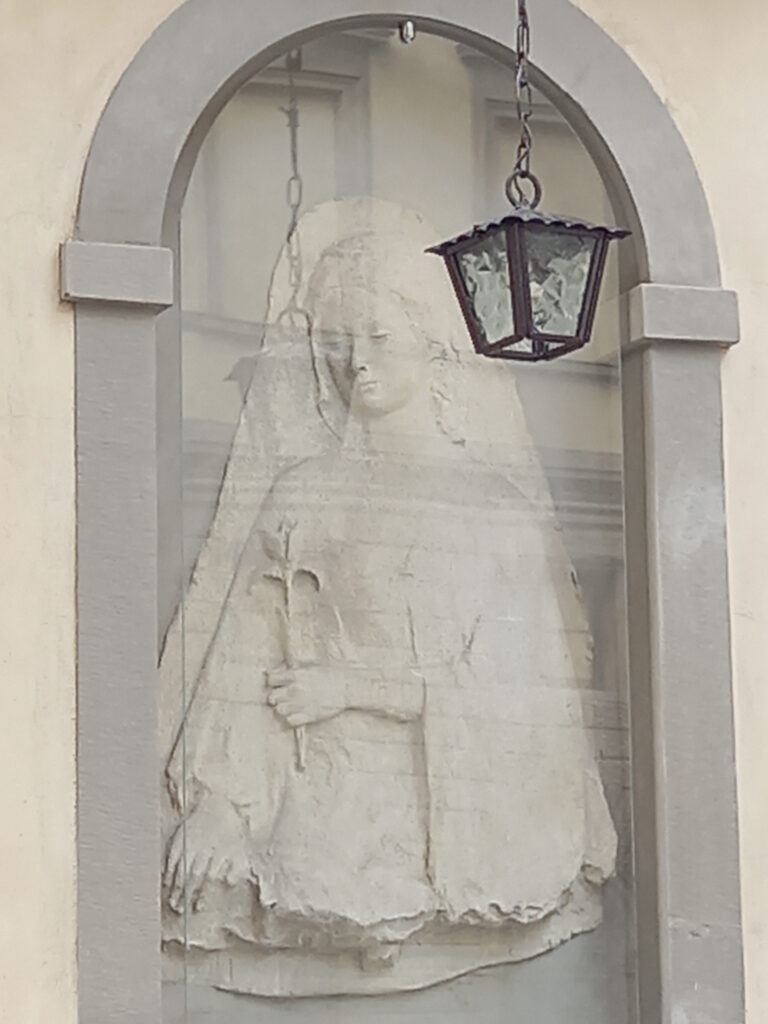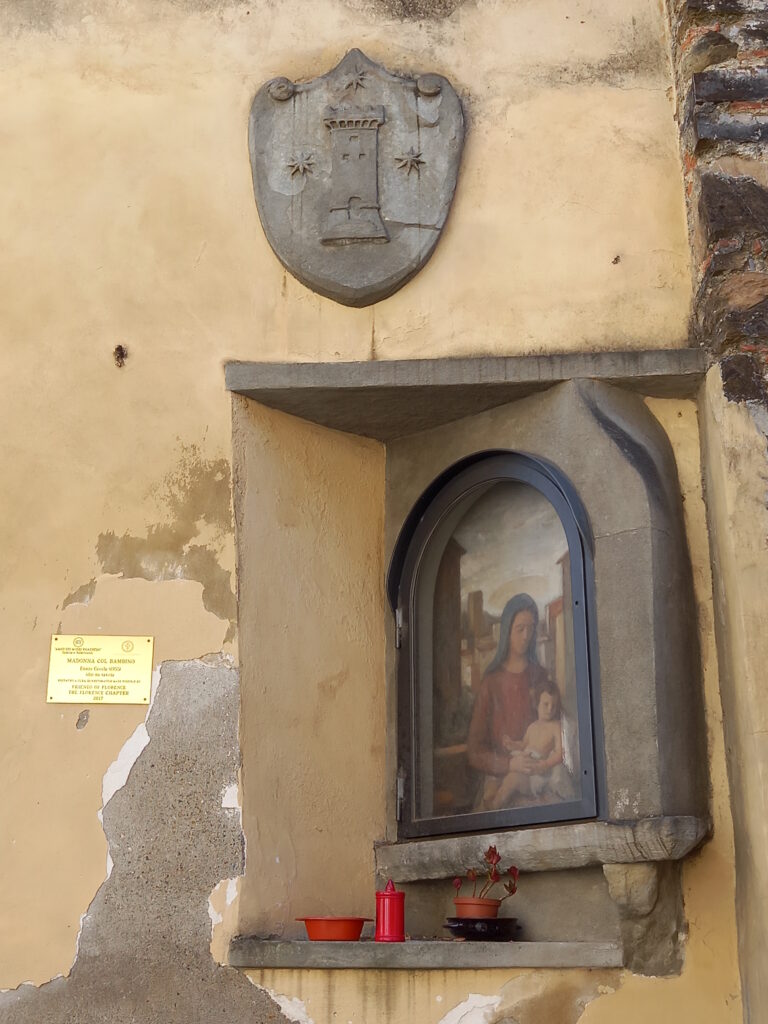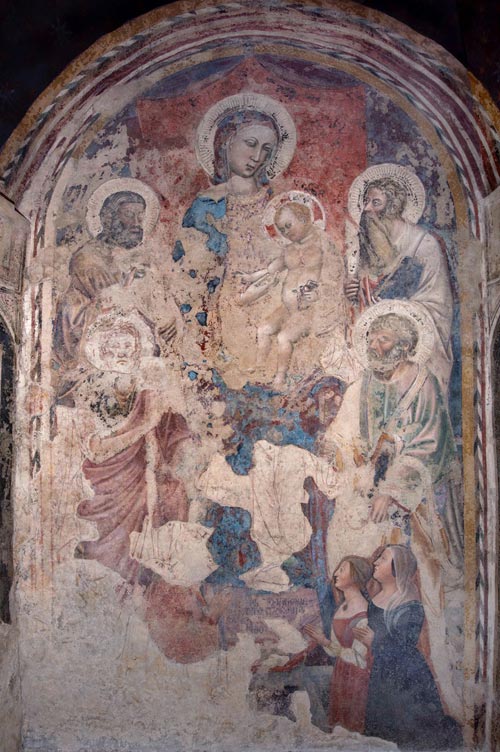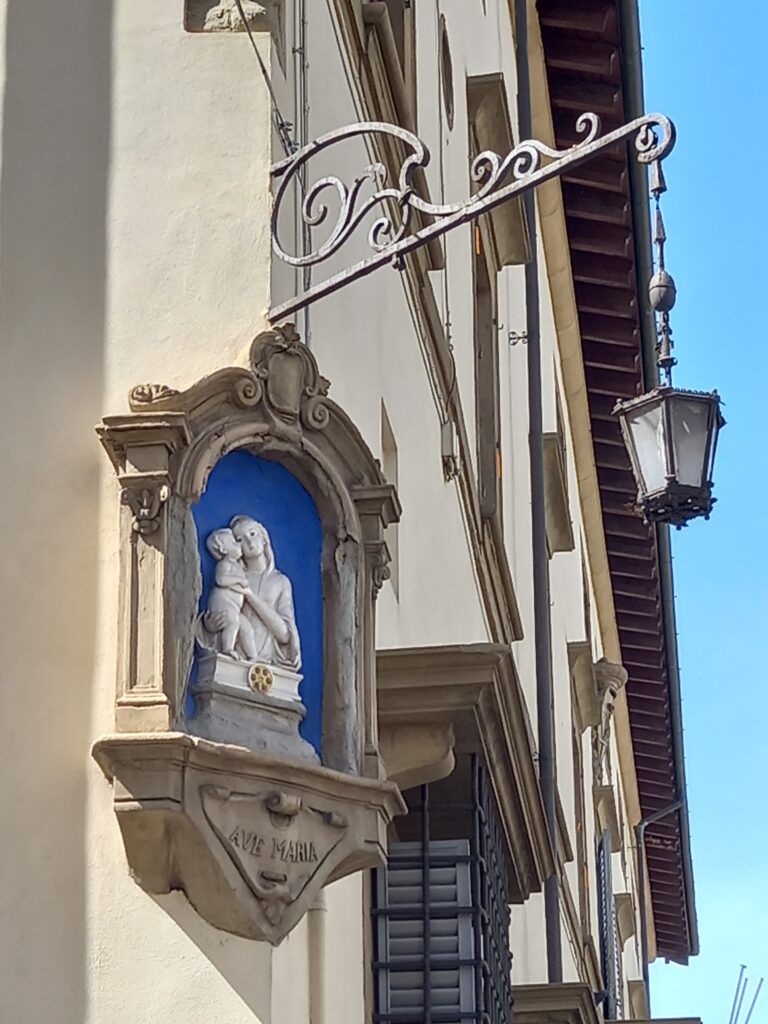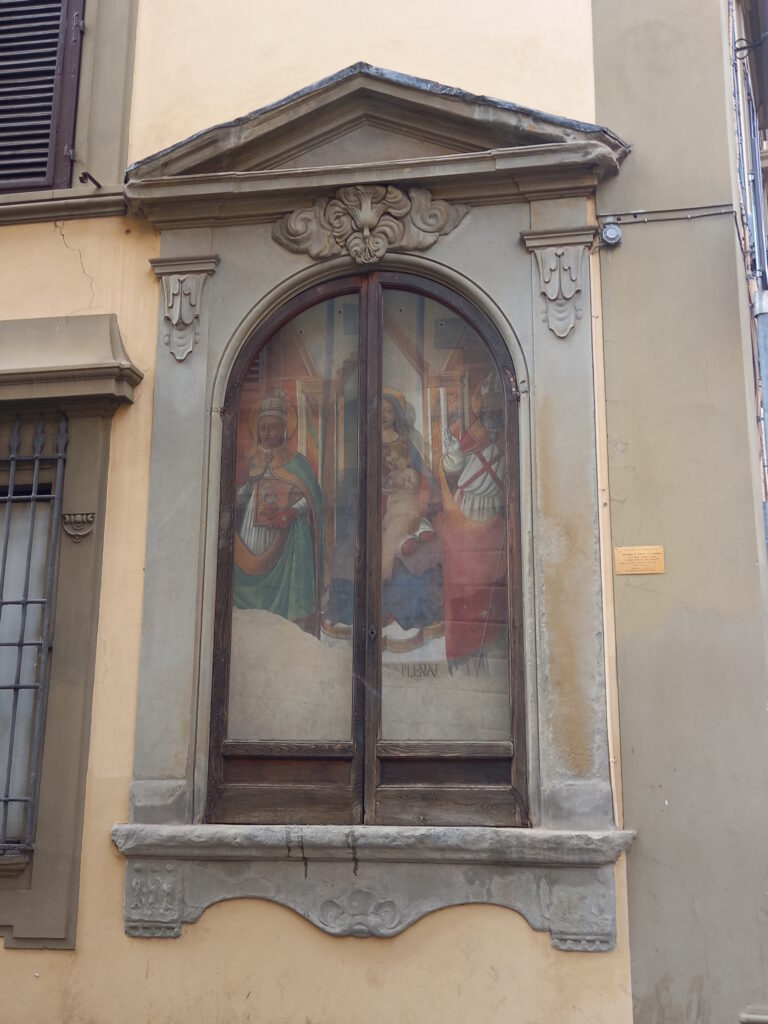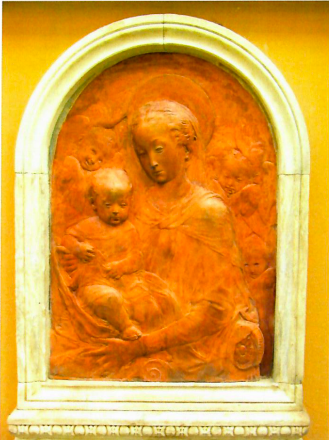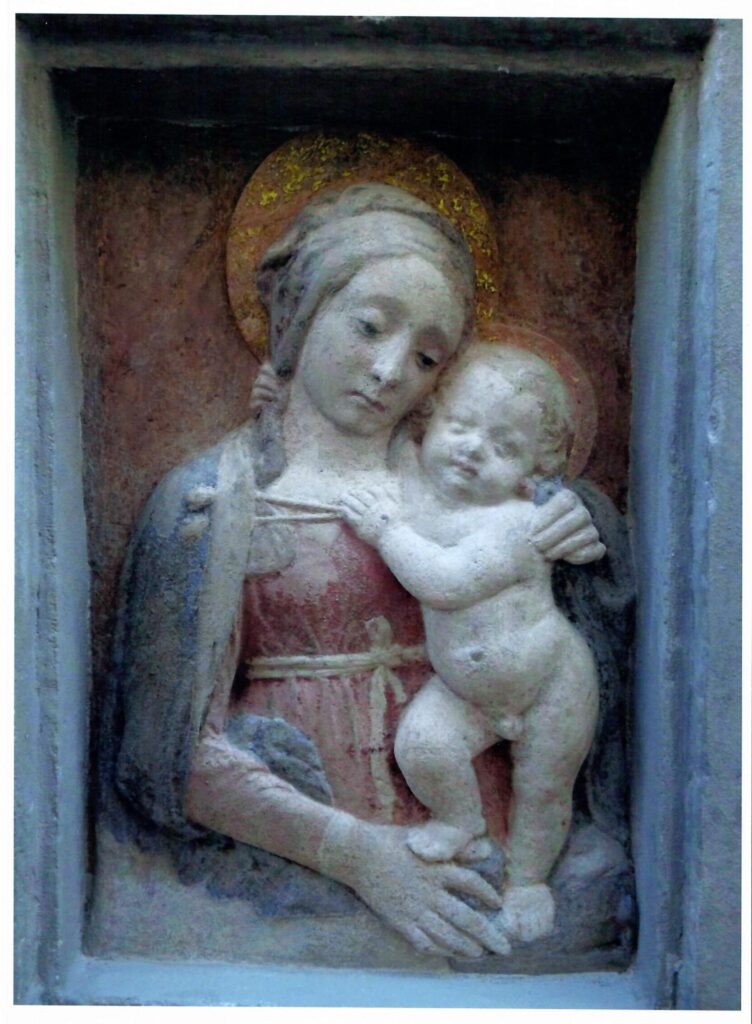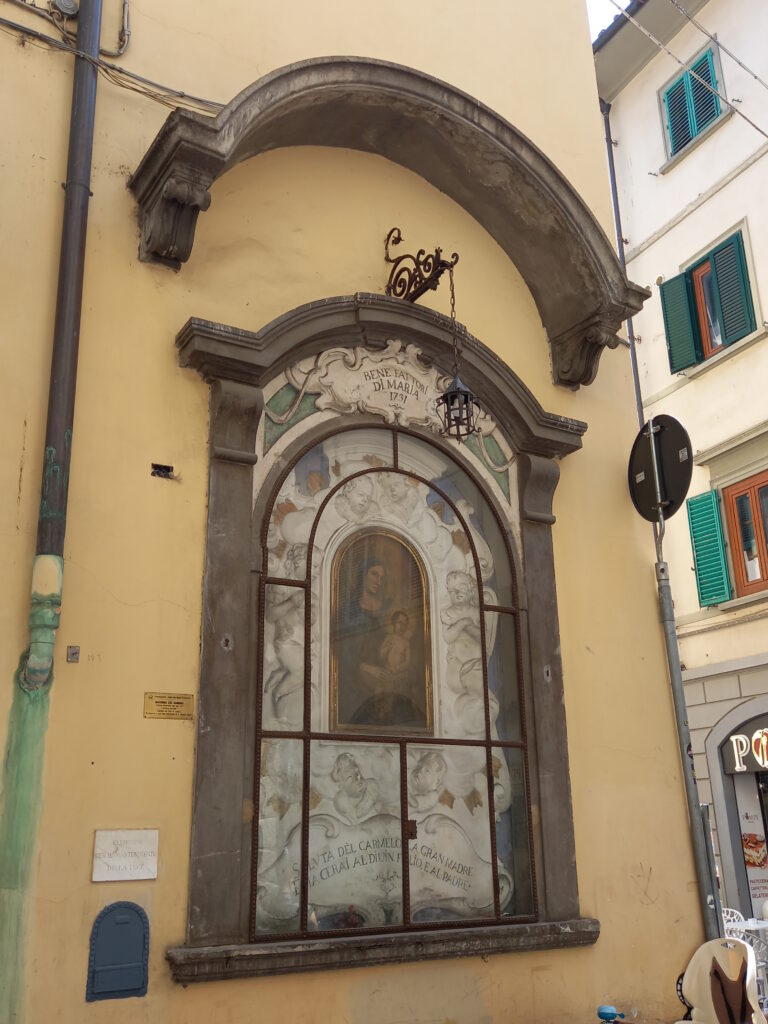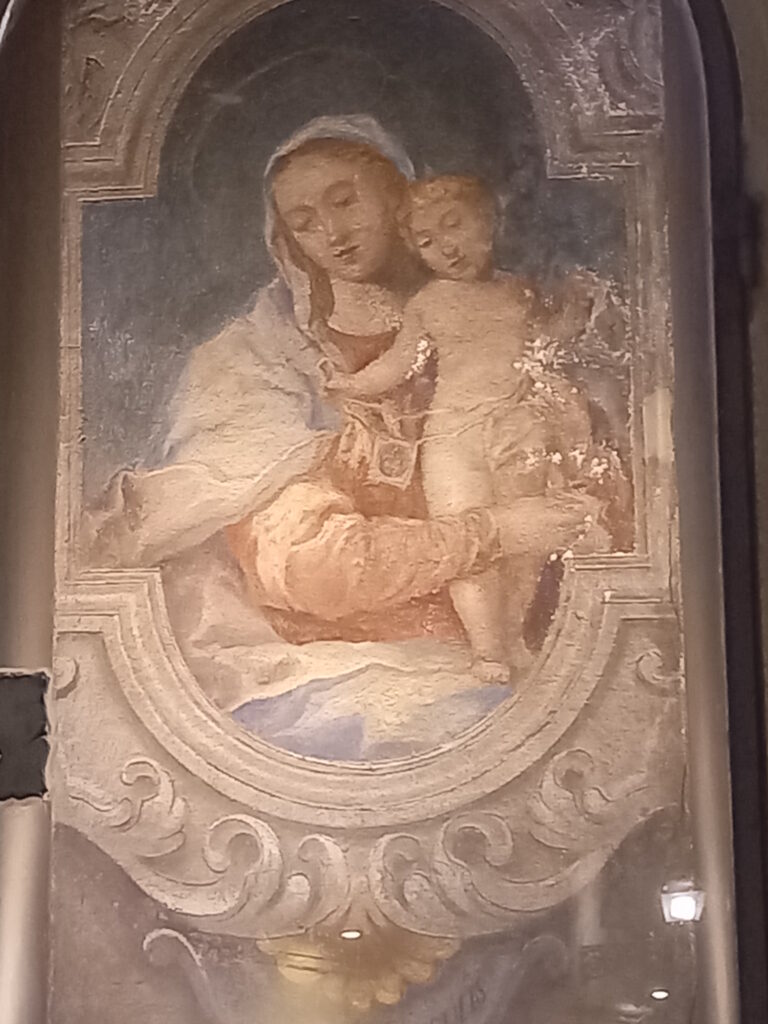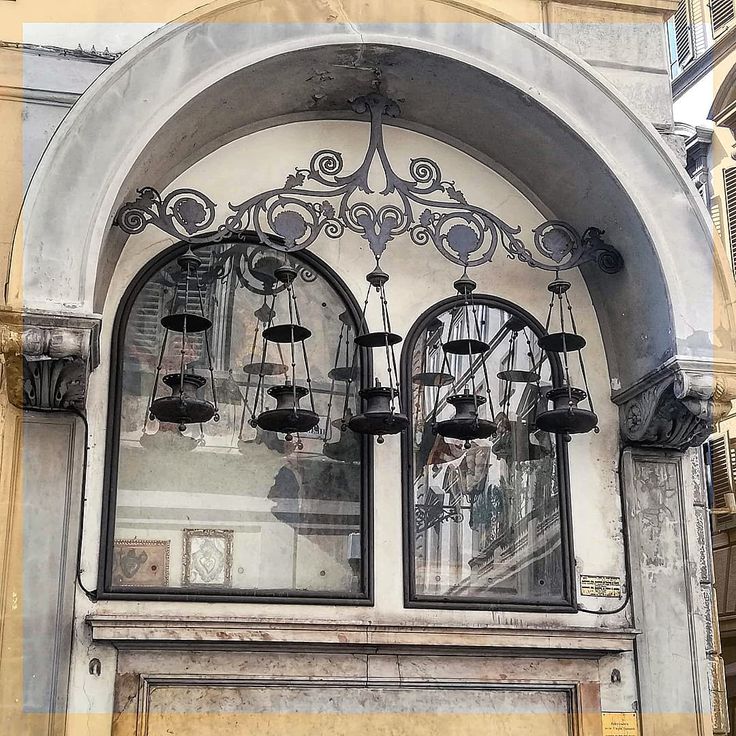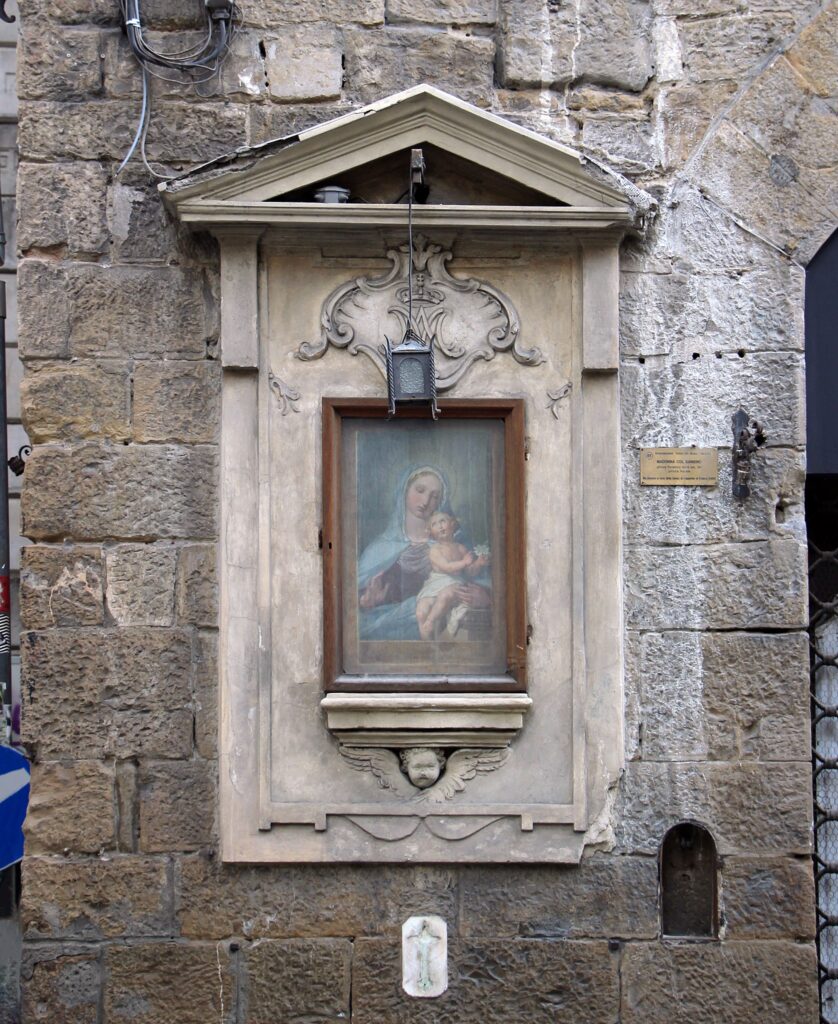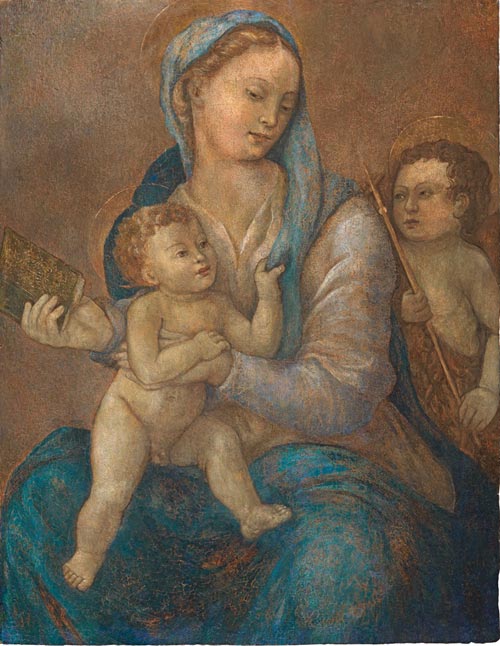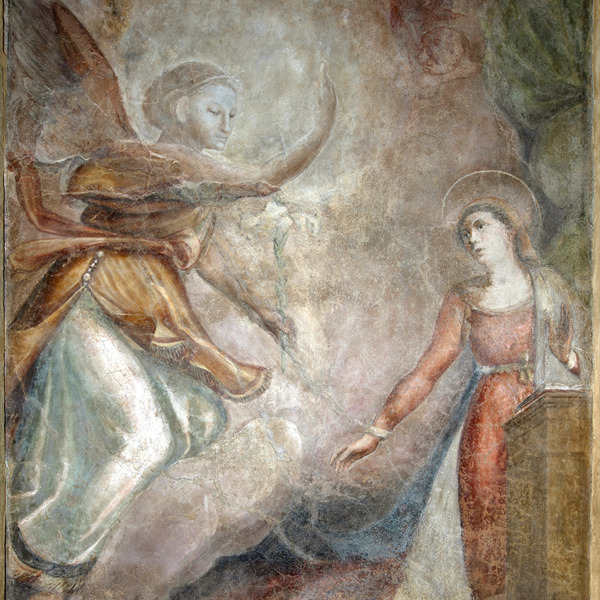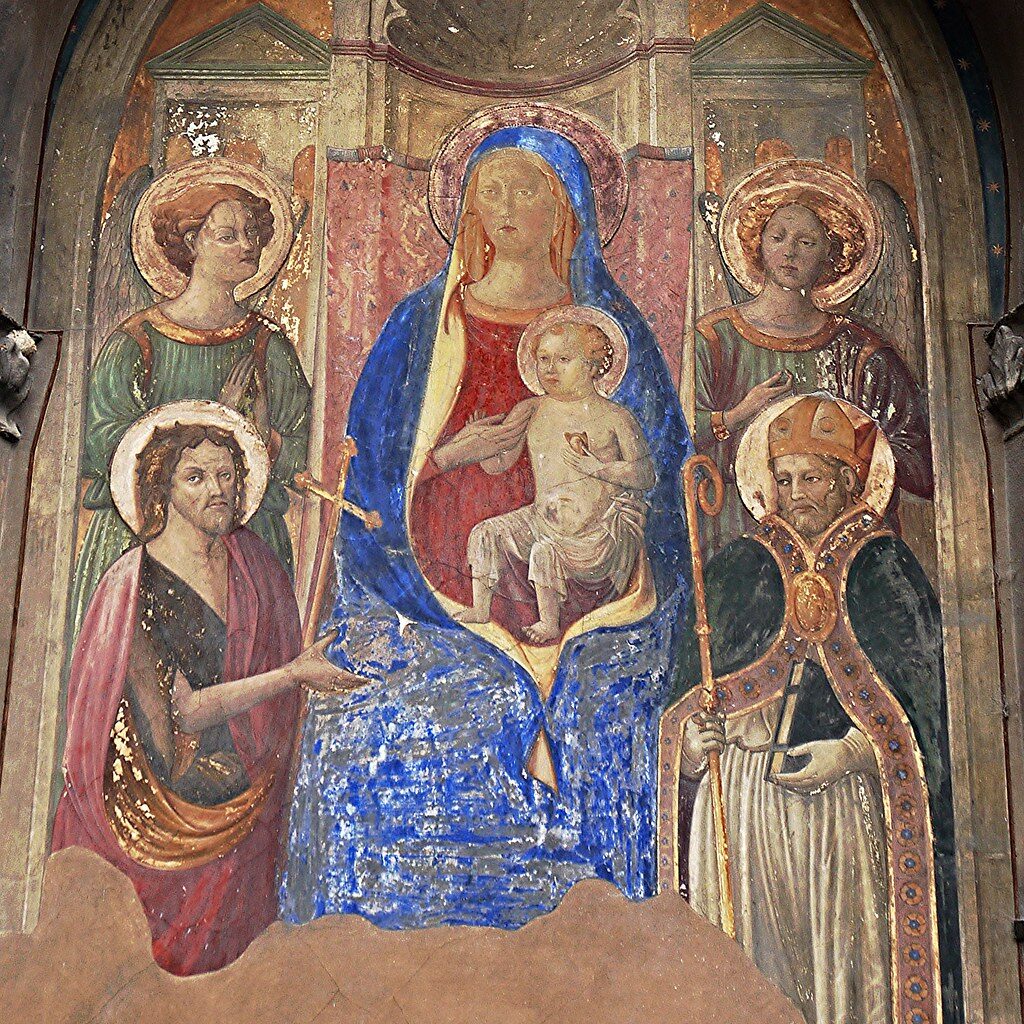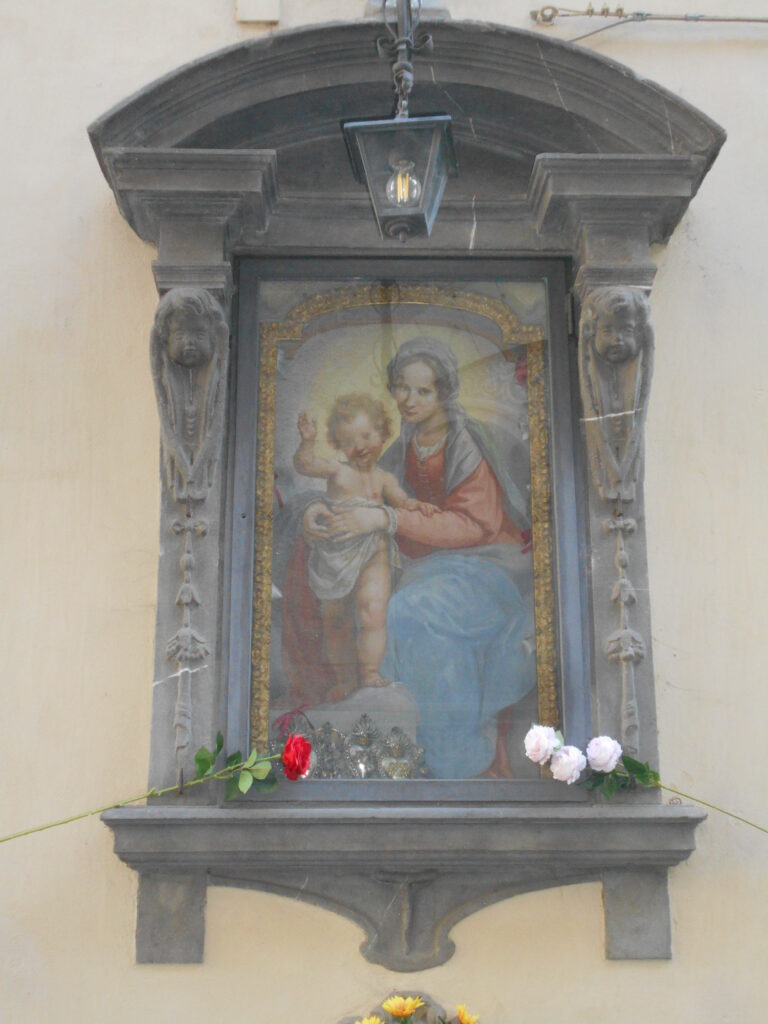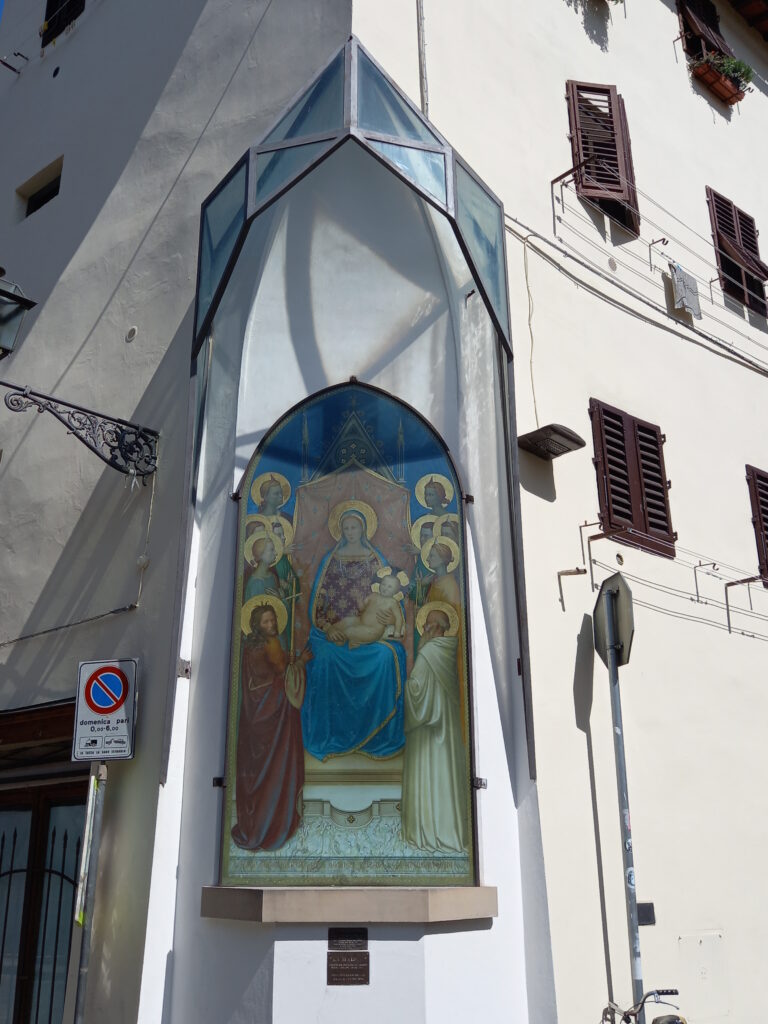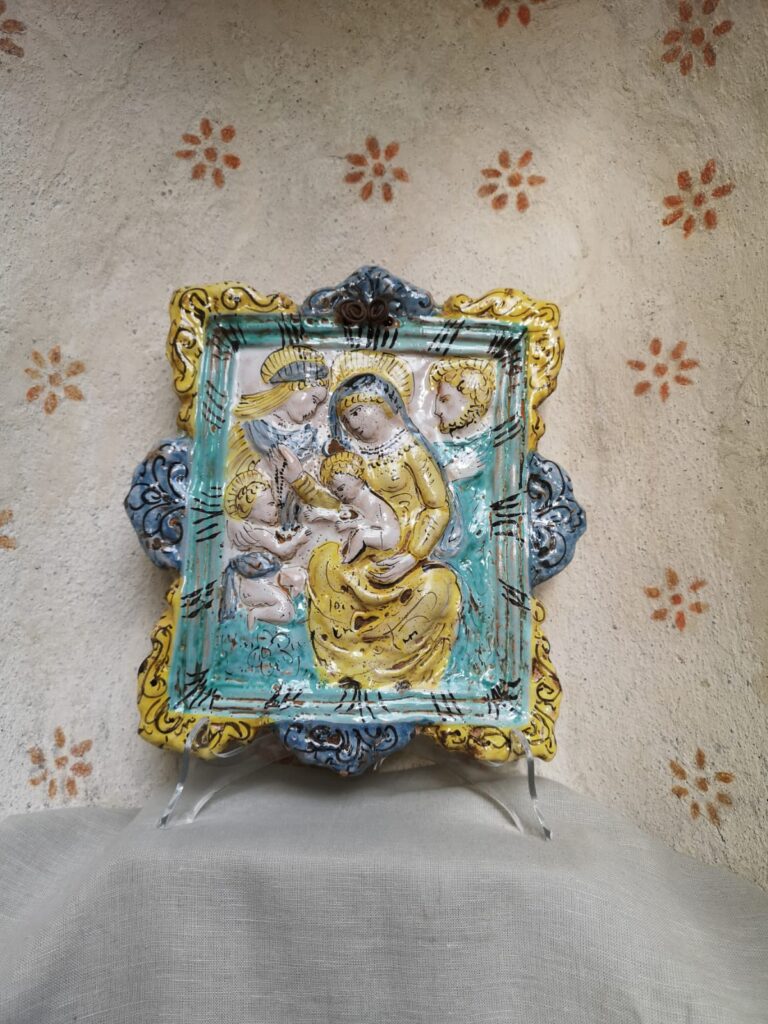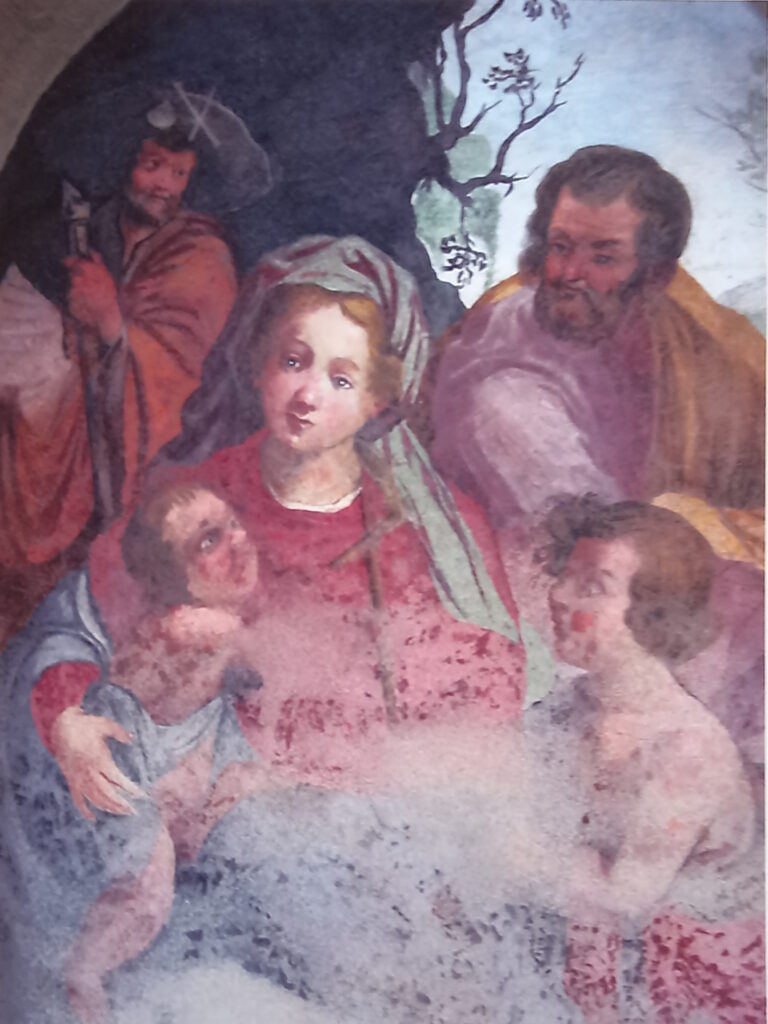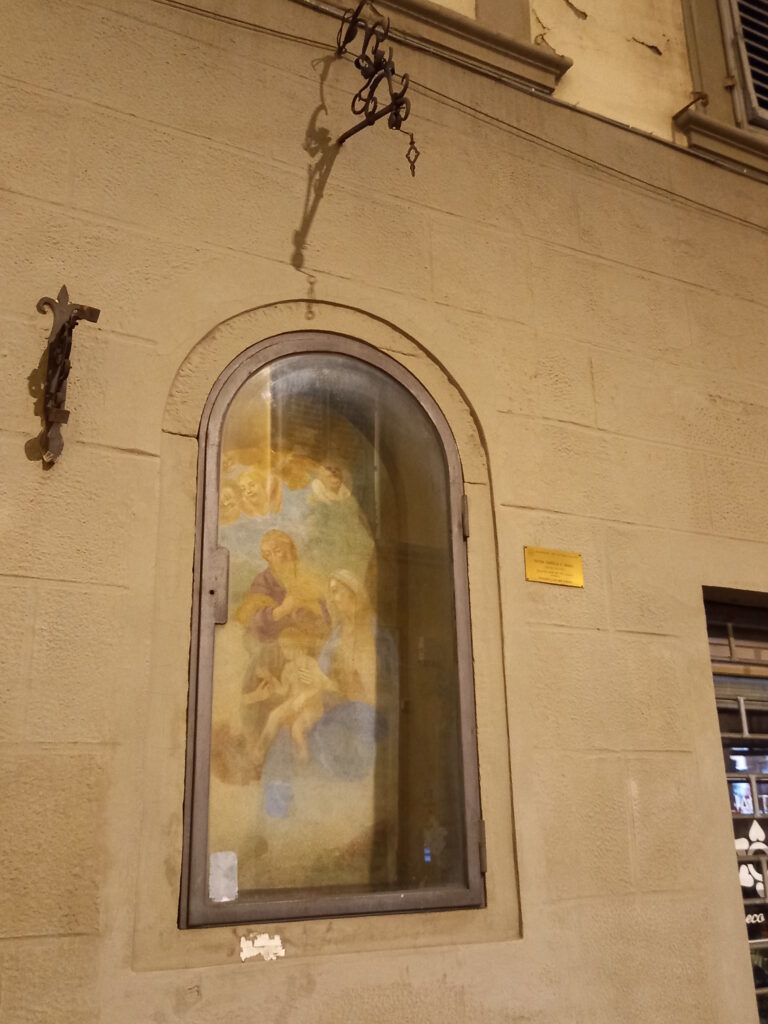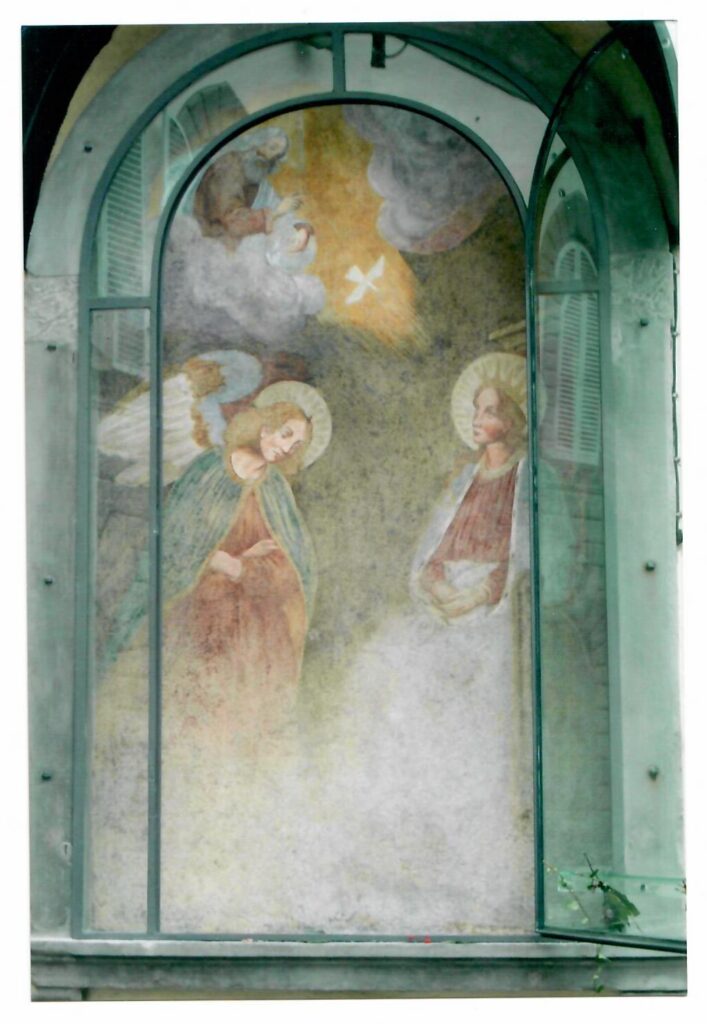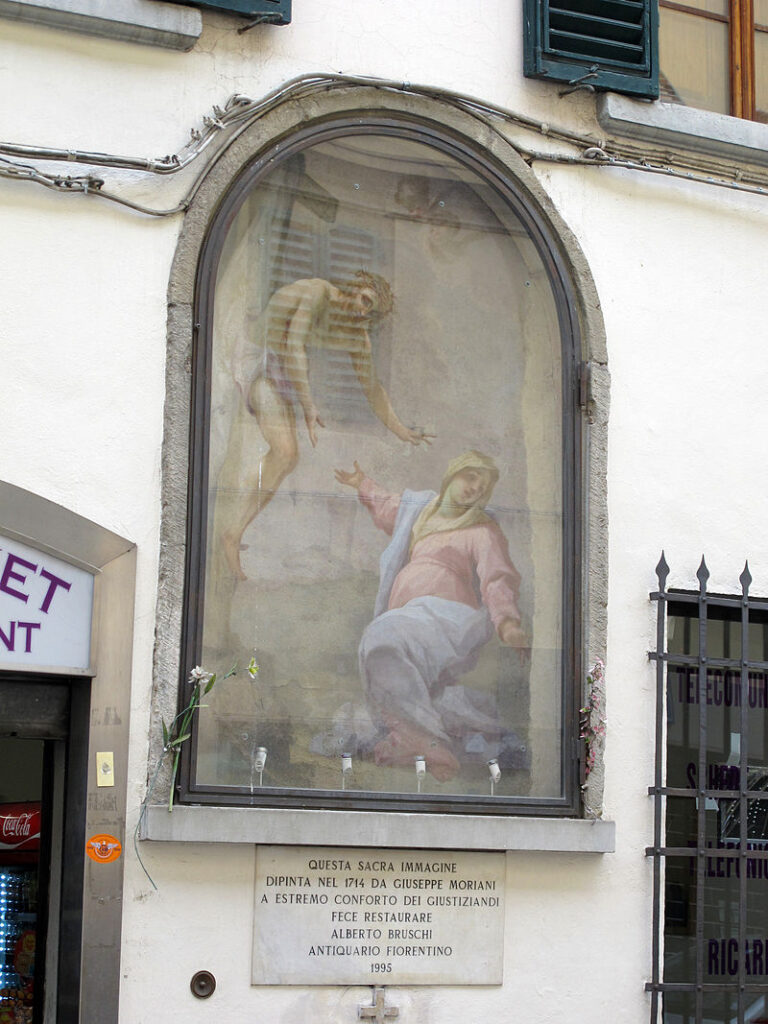In the heart of Florence, 50 sites of art and architecture come to life thanks to the Luoghi Parlanti®, a project by the Fondazione Romualdo Del Bianco and the Associazione Amici dei Musei, under the patronage of the Municipality of Florence. These locations, restored by the Committee for the Decoration and Restoration of Tabernacles, tell stories of faith, art, and tradition, forming a fascinating network of cultural itineraries.
Among the highlights of the project are the Tabernacolo delle Fonticine on Via Nazionale and the shrine at the corner of Piazza Santa Maria Novella and Via della Scala, commissioned by the Guild of Physicians and Apothecaries. Each tabernacle tells its own unique story, such as the ancient hospital of Porcellana or the tragic Tabernacolo delle Cinque Lampade, linked to a dramatic event in 1731.
The five Tabernacle routes:
We begin with Sant’Ambrogio and Santa Maria Nuova, starting from the Tabernacle of the Condemned in Borgo La Croce and continuing in Piazza Sant’Ambrogio with the polychrome statue of Saint Ambrose by Giovanni della Robbia, the Annunciation in Piazza dei Ciompi, the Holy Family in Via Sant’Egidio, and the Madonna with Child by Matteo Rosselli in Via Folco Portinari, with the emblem of the crutch on the frame. The journey concludes with the elegant tabernacle at the corner of Via Bufalini and Via dei Servi and the famous fresco with the Madonna enthroned, surrounded by Saint Zanobi and Saint John the Baptist, painted by Cosimo Rosselli between Via Ricasoli and Via dei Pucci.
In the San Lorenzo area, you can admire a Holy Family with Saint John the Baptist and Saint Roch, a likely votive painting linked to a plague epidemic, and, as you delve into Via Panicale, two Madonnas with Child on the wall that once surrounded the perimeter of the old San Barnaba convent. At the intersection with Via Chiara, where Benvenuto Cellini was born in the 1500s, you’ll find a splendid example of Tuscan maiolica, while at the corner of Via Taddea and Via de’Ginori, there’s the Crucified Christ by Giovanni Antonio Sogliani. You’ll then reach Via Nazionale with the magnificent Tabernacle of the Fonticine by Giovanni della Robbia, son of Andrea.
The area between Via Faenza and Via Sant’Antonino is also rich in history. Starting in Piazza dell’Unità, there’s a glazed terracotta medallion in blue with the figures of the Madonna with Child, attributed to Andrea della Robbia. In Via Sant’Agostino, there are two eighteenth-century Marian images, both painted by Florentine artists. In Via Faenza, you can admire two marvelous copies of the Madonna with Child: one by Benedetto da Maiano, an excellent Florentine architect and sculptor from the late fifteenth century, the author of an identical Madonna now kept in the National Gallery of Art in Washington, and one by Antonio Rossellino, identified in the marble relief in the collection of the Morgan Library and Museum in New York. There’s also a seventeenth-century composition by Giovanni da San Giovanni.
The journey continues through Santa Maria Novella, Via della Scala, and Via Palazzuolo. From Piazza Santa Maria Novella, you enter Via della Scala, immediately finding the copy of the fresco by Francesco d’Antonio (1467), made in 1960 by Tullio Micheli. Between Via del Porcellana and Via Palazzuolo, there’s a fourteenth-century painting of the Taddeo Gaddi school, while at various intersections of Via della Scala, you’ll find a Madonna with Child in the style of Botticelli, a crowned Madonna, a “Madonna del Giglio” created in the 1950s by Pellegrino Banella, and, inside a tabernacle, a young, tender Madonna holding the naked Child, probably commissioned by Nannina de’ Medici, the elder sister of Lorenzo the Magnificent. The journey concludes with a seventeenth-century Holy Family on Via Palazzuolo, near Civic 89.
The Oltrarno area is also included, from the Pietà and the Virgin in Piazza San Felice to the Madonna with Child at the corner of Via dei Preti and Via delle Caldaie, likely dating to the plague of 1495 due to the presence of the two patron saints against the plague, Saint Roch and Saint Sebastian. From the Gloria Madonna between Via Maffia and Via Sant’Agostino to those with Child between Piazza del Carmine and Piazza Piattellina, one from the fourteenth century and one from the sixteenth century, repainted in the last century. And then the large tabernacle with the arch supported by numerous lobes with heraldic emblems carved in the spandrels between Piazza Piattellina and Via del Leone, at the end of which you’ll find a Madonna painted by Giottino, which is said to have originally been in Piazza di Santo Spirito. In Via del Campuccio, you’ll encounter a Virgin with Saint John the Baptist and Saint Bernardino of Siena, and a Madonna with Child by the twentieth-century painter Ennio Cocchi. The journey ends on Viale Pratolini, with a sacred tabernacle whose respect is testified by the inscription next to it:
“The proclamation of October 16, 1618, prohibits any improper act in the vicinity of the tabernacle to preserve its dignity and sacredness; for its violation, a monetary penalty or corporal punishment is provided.”









